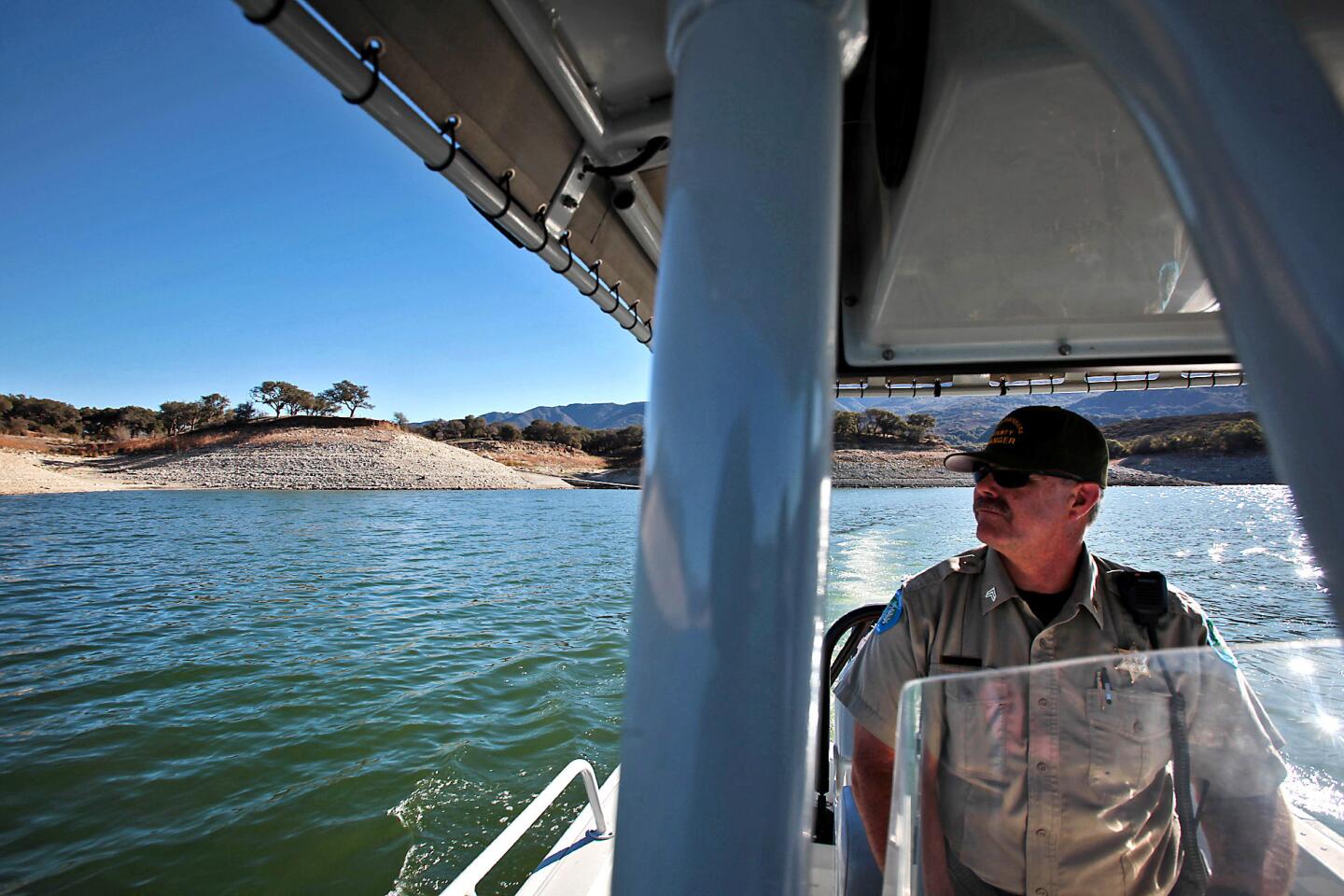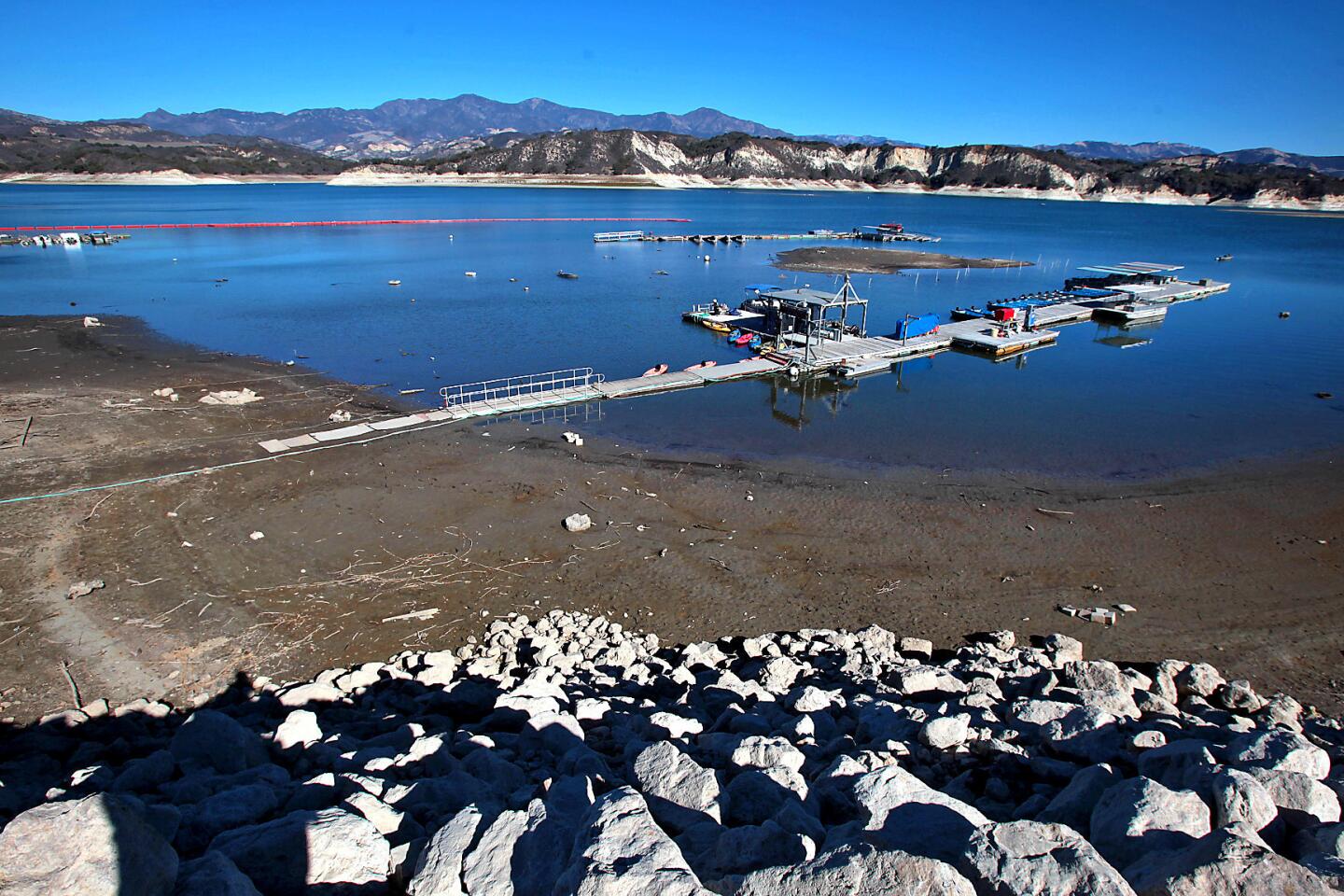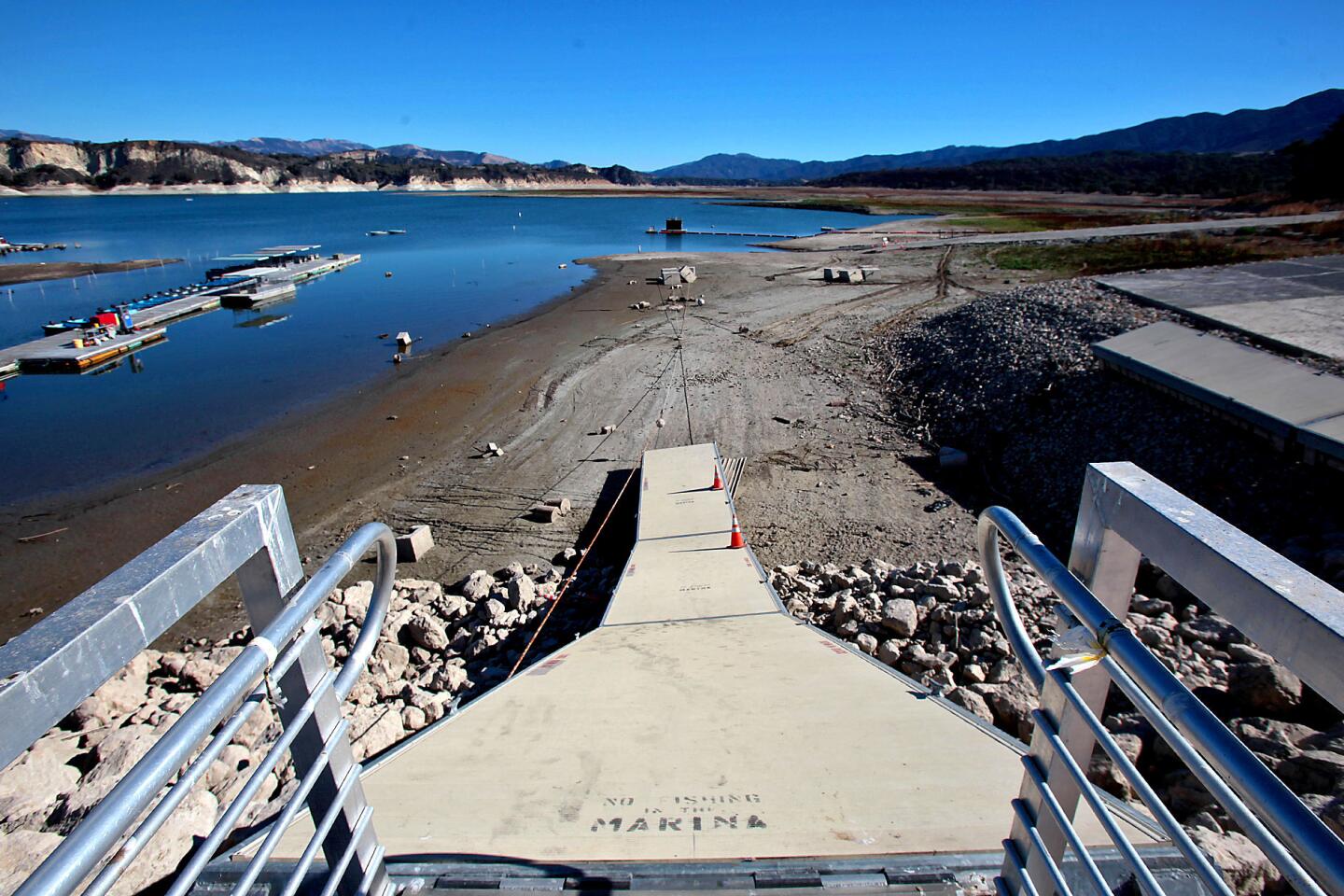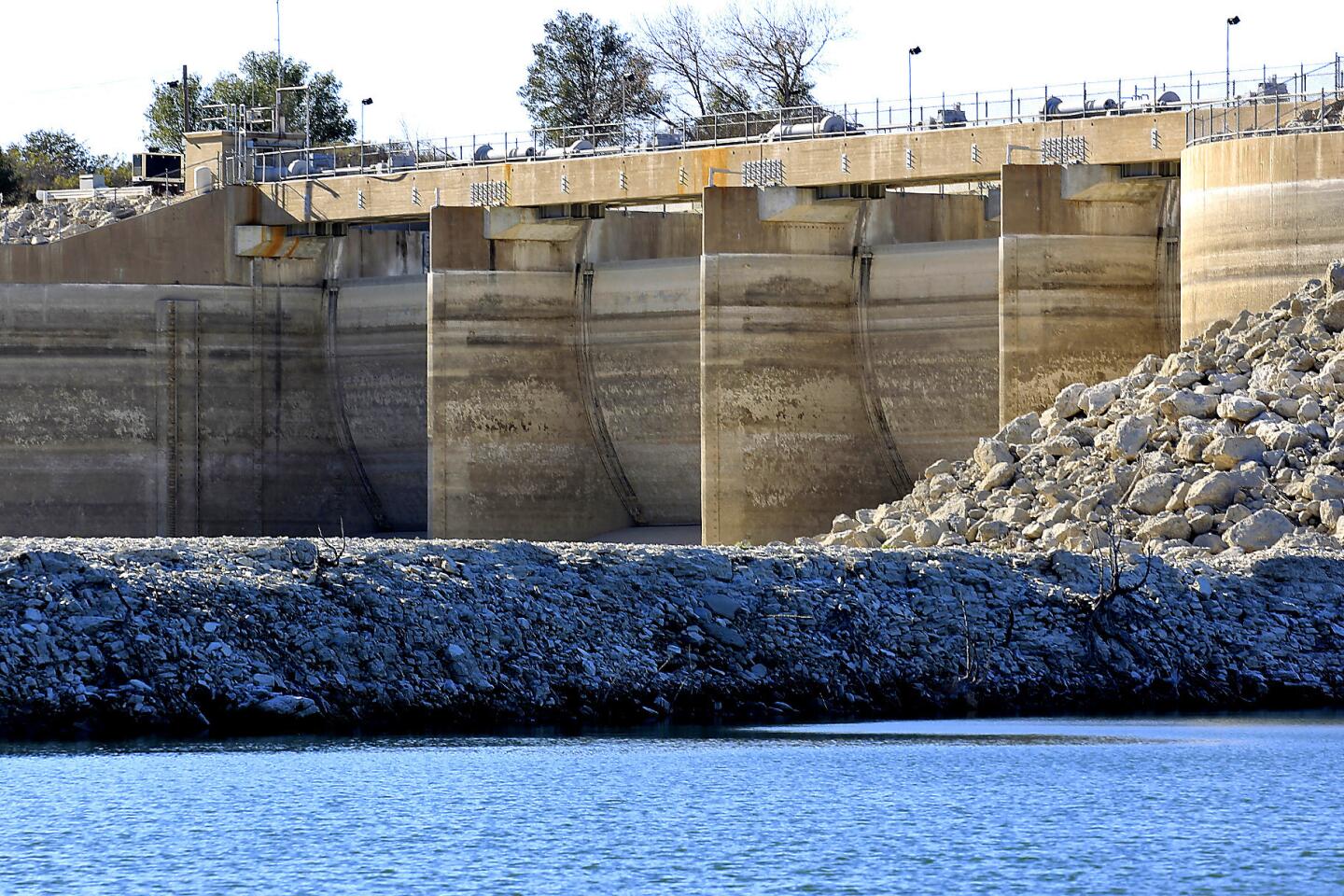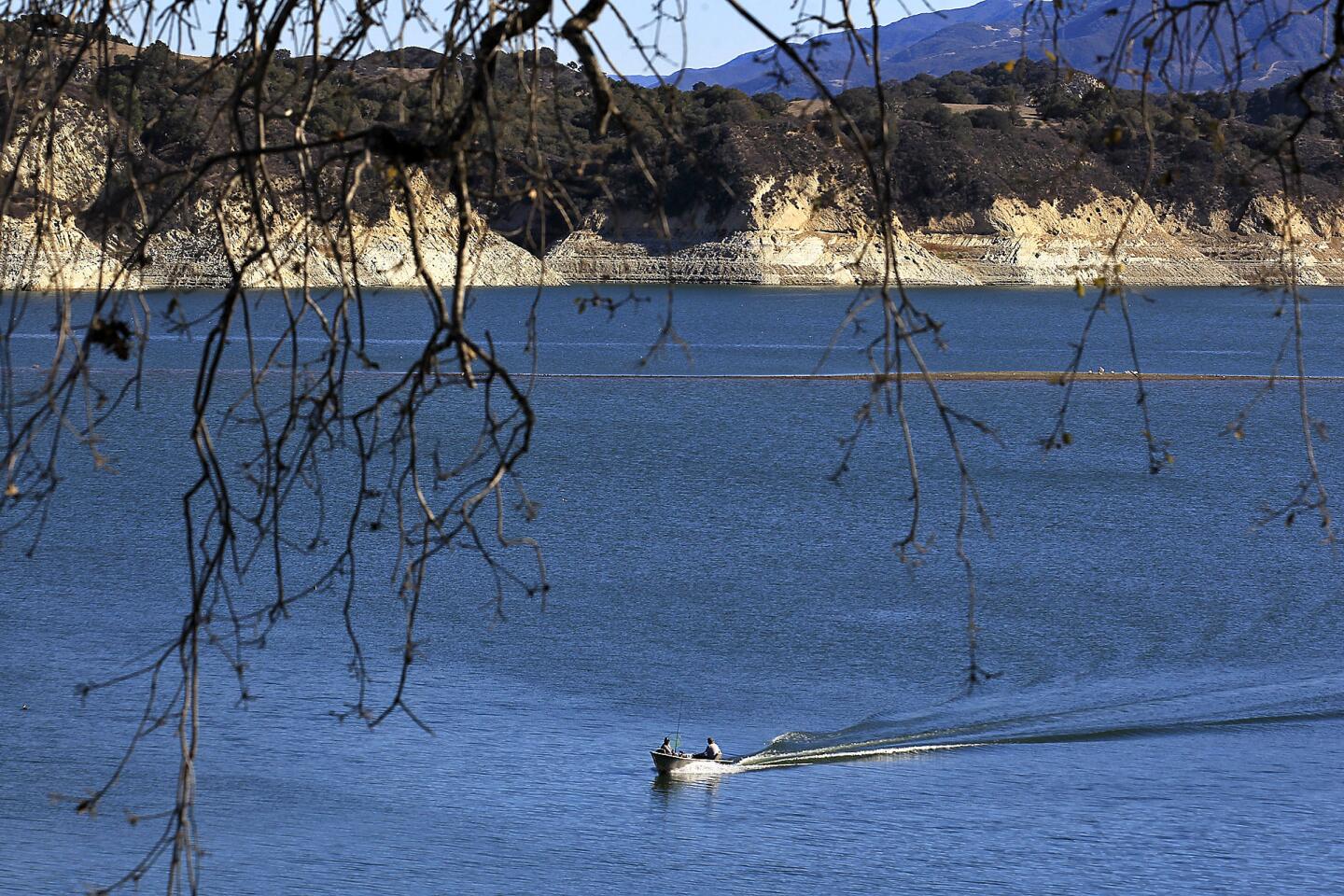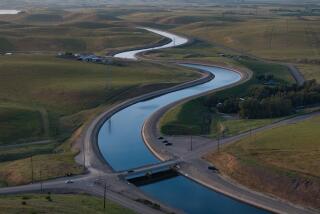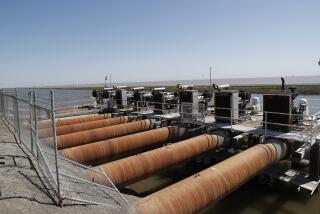State awards $2 million to Cachuma Lake pumping project
Santa Barbara County water agencies announced Friday that they will receive $2 million in state funding for a pumping project at Cachuma Lake -- a source of drinking water for 220,000 people on the southern central coast -- where water levels have dropped precipitously low.
As the California drought drags on, conditions have jeopardized the lake’s gravity-fed system that supplies water to customers. If the situation does not improve, officials may have to begin pumping at the end of April or early May, said Randy Ward, general manager of the Cachuma Operation and Maintenance Board.
The lake provides drinking water to the cities of Goleta and Santa Barbara, Montecito and Carpinteria. If water levels reach a certain low point -- dependent on demand, temperature and rain -- gravity will no longer work as a way of getting water out of lake, and it will have to be pumped out, Ward said.
The pump is already in place, but if the state money had not come through, customers would have had to bear the burden of paying for the $5-million system through higher water rates, said state Sen. Hannah-Beth Jackson (D-Santa Barbara), who worked with Assemblyman Das Williams (D-Carpinteria) to secure the funding.
Cachuma Lake, which is at 28% capacity, is disappearing with little hope that conditions will improve anytime soon.
“When you can drive along the lake bed, you know you have a problem,” Jackson said Friday.
Before the drought, Cachuma “spilled” — filled to the brim, to the point where millions of gallons of clean, fresh water were released through the dam’s gates to flow to the sea.
The reservoir has been in trouble before. In 1990 and 1991, water levels were even lower. Back then, some residents were catching excess shower water in buckets to use to flush their toilets.
Now, chunks of the past are strewn about the exposed lakebed as the water recedes — overturned rowboats, anchors, buoys, maritime cables, even fishing lures that snagged on branches perhaps decades ago.
The money was awarded by the State Water Resources Control Board and the state Department of Water Resources.
Times staff writer Scott Gold contributed to this report.
For Central Coast news, follow @amcovarrubias.
More to Read
Start your day right
Sign up for Essential California for news, features and recommendations from the L.A. Times and beyond in your inbox six days a week.
You may occasionally receive promotional content from the Los Angeles Times.



